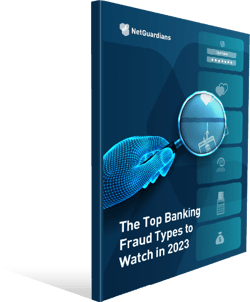A new smart software to spot more fraud and cut false alerts, helping banks improve customer service and keep a lid on costs. Writes Joël Winteregg.
Whether you’re a venture capital-backed neo bank or a digital unit of an established Tier 1 bank, fraud mitigation should be high on your agenda. Once regarded as a business cost, today the problem and its ripple effect can taint your reputation and influence your ability to attract and retain customers. In addition, regulators are starting to pay more attention to fraud prevention, for instance with the Singapore watchdog already featuring fraud behavior monitoring in its compliance rules.
Evidence of rising fraud attacks is everywhere. The Financial Times recently reported that spam messages designed to get information that could be used to commit fraud multiplied by 220 between February and March last year – the start of the global Covid-19 pandemic. At the same time, malicious URLs leading to malware downloads or scams jumped 260 percent. While not all spam emails or malware attacks succeed, as their number rises so do the rates of success.
Merchantsavvy, a payment comparison site, estimates that last year global payment fraud losses amounted to $32.4 billion and predicts they will rise to $40.62 billion by 2027. Furthermore, Interpol has recently reported that fraudsters have widened their focus from individuals to include major corporations, governments, and critical infrastructure. This is piling on pressure for banks to do more to stop it.
Customer service key for digital banks
For neo banks, signing up new customers is understandably the priority, along with compliance to secure their banking license. New banks launched by established financial services players have a similar concern when it comes to customer attraction, but compliance they have covered. Instead, reputation and speed-to-market are key. Both groups will also have a keen eye on budgets, wanting to make their funding go as far as possible.
Customers are flocking to digital bank accounts with ease-of-use a driving factor. Fast payments, low fees and tailored services are proving popular. But support for when things go wrong – an account frozen due to a suspicious payment, for example – is expensive and typically not always well resourced. Furthermore, as customer numbers increase, so does the cost of supporting them. Reports of angry customers have been widespread, particularly over frozen accounts, undermining the all-important customer experience.
A smarter software solution
The problem, though, isn’t cost or compliance. It’s a reluctance to re-evaluate priorities. With fraud mitigation traditionally low down the list, too many digital banks, be they neo or part of a larger banking group, aren’t giving it the attention it deserves. The reality today is that many don’t understand that efficient and effective fraud mitigation doesn’t demand expensive investigations over suspicious payments and unblocking of frozen accounts. Nor does a Tier 1 bank need to spend precious resources integrating its existing corporate fraud software onto its new digital platform. There is also the problem of integrating a solution that was not designed for the straight through processing increasingly used by banks.
Slashing the number of false alerts
But what about the customer experience? Part of the problem with some fraud solutions is the high number of false alerts. Each must be investigated and resolved – slowing up transactions and leading to customer friction. New generation AI software cuts false alerts by up to 83 percent. They also incorporate collective AI, which allows the software to draw on data from multiple banks to make it even smarter.
By supplementing individual customer data with that of anonymized data from other banks’ customers and grouping them together, these types of softwares understand faster how behavior changes and develops over time. Thus, a simple change in behavior won’t trigger a flag, but a suspicious one will. Transaction-friction is greatly reduced, cutting investigation time, saving money and providing the best customer experience – all possible with even little historic data, making it ideal for newly established banks.
The lesson is clear. Skimping on fraud-mitigation software is a false economy. It undermines the customer experience, pushes up costs, and leaves the bank vulnerable to more fraud, fraught customer experience and bad publicity. When the customer experience is hit, bad publicity piles on even more pressure. Smart new banks are turning to AI-driven software.
This article first appeared in Mambu's website.



